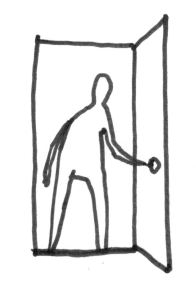Create the change you want by changing the way you think
Liminal thinking is the art of finding, creating and using thresholds to create change. It is a kind of mindfulness that enables you to create positive change.
The nine practices of liminal thinking can be summarized as three simple precepts:
1. Get in touch with your ignorance.
Why do some people succeed at change while others fail? It’s the way they think! Liminal thinking is the art of creating change by understanding, shaping, and reframing beliefs. What beliefs are stopping you right now?
You have a choice. You can create the world you want or live in a world created by others. If you are ready to stop making excuses and start making changes, read on.
No matter who you are or what your situation is, some change is always possible. If there’s a situation in the world you want to change, liminal thinking can help.
Beliefs form the basis of everything people say, think, and do. When people change their beliefs, they change their behavior, which changes their lives.
Liminal thinking is a set of skills that anyone can learn.
You do not need any formal authority, budget, or official sanction to practice liminal thinking. If you can learn six principles and nine practices, you will be able to to minimize reality distortion, improve understanding, and open up new possibilities for positive change in your work and life.

Liminal thinking is the art of finding, creating and using thresholds to create change. It is a kind of mindfulness that enables you to create positive change.
The nine practices of liminal thinking can be summarized as three simple precepts:
1. Get in touch with your ignorance.
2. Seek understanding.
3. Do something different.
NINE PRACTICES
Nine practices to help you minimize reality distortion, envision possibilities, and create positive change.
1. Assume that you are not objective. If you’re part of the system you want to change, you’re part of the problem.
2. Empty your cup. You can’t learn new things without letting go of old things. Stop, look, and listen. Suspend judgment. What’s going on?
3. Create safe space. If you don’t understand the underlying need, nothing else matters. People will not share their innermost needs unless they feel safe, respected, and accepted for who they are.
4. Triangulate and validate. Look at situations from as many points of view as possible. Consider the possibility that seemingly different or contradictory beliefs may be valid. If something doesn’t make sense to you, then you’re missing something.
5. Ask questions, make connections. Try to understand people’s hopes, dreams and frustrations. Explore the social system and make connections to create new opportunities.
6. Disrupt routines. Many beliefs are embedded in habitual routines that run on autopilot. If a routine is a problem, disrupt the routine to create new possibilities.
7. Act as-if in the here-and-now. You can test beliefs even if you don’t believe they are true. All you need to do is act as if they were true and see what happens. If you find something that works, do more of it.
8. Make sense with stories. If you give people facts without a story, they will explain it within their existing belief system. The best way to promote a new or different belief is not with facts, but with a story.
9. Evolve yourself. If you can be open about how change affects you personally, you have a better chance of achieving your aims. To change the world, you must be willing to change yourself.
These practices are based on six principles, which constitute a theory of beliefs.
SIX PRINCIPLES
These six principles constitute a theory of beliefs: how they come into being, why they are necessary, how they are reinforced over time, and why people cling to their beliefs, even when they are incomplete, obsolete, or invalid. They are beliefs about beliefs.
1. Beliefs are models. Beliefs seem like perfect representations of the world, but in fact they are imperfect models for navigating a complex, multidimensional, unknowable reality.
2. Beliefs are created. Beliefs are constructed hierarchically, using theories and judgments, which are based on selected facts and personal, subjective experiences.
3. Beliefs create a shared world. Beliefs are the psychological material we use to co-create a shared world, so we can live, work, and do things together. Changing a shared world requires changing its underlying beliefs.
4. Beliefs create blind spots. Beliefs are tools for thinking and provide rules for action, but they can also create artificial constraints that blind you to valid possibilities.
5. Beliefs defend themselves. Beliefs are unconsciously defended by a bubble of self-sealing logic, which maintains them even when they are invalid, to protect personal identity and self-worth.
6. Beliefs are tied to identity. Governing beliefs, which form the basis for other beliefs, are the most difficult to change, because they are tied to personal identity and feelings of self-worth. You can’t change your governing beliefs without changing yourself.
These principles can be applied via nine practices that help minimize reality distortion, envision possibilities, and create positive change.

No comments:
Post a Comment